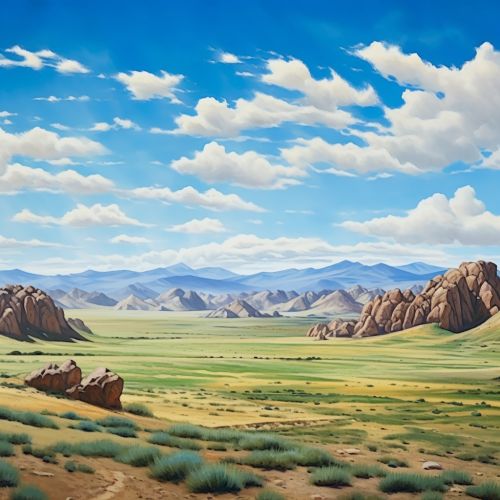Mongolia
Geography
Mongolia is a landlocked country located in East and Central Asia. It is bordered by Russia to the north and China to the south, east and west. Mongolia's political system is a parliamentary republic.
The area of what is now Mongolia has been ruled by various nomadic empires, including the Xiongnu, the Xianbei, the Rouran, the Turkic Khaganate, and others. In 1206, Genghis Khan founded the Mongol Empire, which became the largest contiguous land empire in history. His grandson Kublai Khan conquered China to establish the Yuan dynasty.


After the collapse of the Yuan, the Mongols retreated to Mongolia and resumed their earlier pattern of factional conflict, except during the era of Dayan Khan and Tumen Zasagt Khan.
In the 16th century, Tibetan Buddhism began to spread in Mongolia, being further led by the Manchu-founded Qing dynasty, which absorbed the country in the 17th century. By the early 1900s, almost one-third of the adult male population were Buddhist monks.
History
Mongolia declared independence from the Qing dynasty, and established an independent republic in 1911. However, the republic was short-lived and broke down when the country was occupied by Chinese troops backed by Soviet Russia, who in 1924 established the Mongolian People's Republic. After the anti-Communist revolutions of 1989, Mongolia conducted its own peaceful democratic revolution in early 1990. This led to a multi-party system, a new constitution of 1992, and transition to a market economy.
Economy
Mongolia's economy is centered on agriculture and mining. Mongolia has rich mineral resources, and copper, coal, molybdenum, tin, tungsten, and gold account for a large part of industrial production. There are currently over 30,000 independent businesses, mostly in the service sector. There are also a number of traditional pastimes, such as horse riding, wrestling, and archery.
Culture
Mongolian culture has been heavily influenced by the Mongol nomadic way of life. Other important influences are from Tibet and Tibetan Buddhism, and from China. Since the 20th century, Russian and, via Russia, European cultures have had a strong effect on Mongolia.
